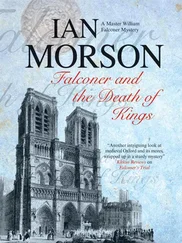While most grasses are palatable if eaten in the early stages of growth, quite a number develop harsh or hairy leaves, or even spines on the leaf margins, as they grow older, and hence are rejected by stock. A grass which may be highly valuable in all other respects can be rendered useless by this factor; Yorkshire fog and the coarser forms of tall fescue are typical examples. In practice it is not always possible to utilise a field at the ideal stage of growth, when the grass is most palatable to stock, and thus grasses which retain their palatability over a long period are particularly valuable. Yield and feeding value are complementary factors, the one without the other being useless to the farmer. In this connection the structure of the grass is important, for species with a high proportion of leaf to stem are much more valuable than stemmy ones, since the leaves are more palatable and contain more protein than the stalks. Grasses become coarse and stemmy with a corresponding reduction in feeding value as they reach the seeding stage. Plant breeders of recent years have endeavoured, therefore, to produce strains of grasses with a high proportion of leaf to stem and with a natural reluctance to produce flowering heads.
From the farming angle as well as the ornamental, a capacity to remain green during the winter months is important. This extends the grazing season and reduces the need for expensive artificial feeding of livestock. Certain varieties of meadow foxtail and red fescue, for instance, have been bred to produce leafage during February and March.
In the last thirty years a great deal of attention has been paid to variations of type within each grass species. Perennial ryegrass, for example, may be tufted, stemmy and short-lived or it may be leafy and persistent. Some types are very prostrate in growth whilst others are erect. Some are very palatable, others less so. The same comments are applicable to all the important species of commercial value such as cocksfoot, timothy, and meadow fescue, and these are classified into what are technically known as “cultivars” (but more familiarly as varieties or strains), and multiplication by division and seed of these strains is carried out on a large scale.
It is very evident there can be no simple answer to the question, “Which is the best grass?” Quite apart from the great variations which we have seen exist within the grasses themselves, the complexity of the problem is magnified by varying systems of management whether for grazing or conservation, by the use of different seeds mixtures, by fertiliser and herbicidal treatment, by disease and insect pest, and by the varying requirements of sheep and cattle. The whole fascinating study is unfolded in the following chapters.
CHAPTER 4TYPES OF BRITISH GRASSLAND

Centuries of biotic influence have brought about the formation of our so-called natural types of grassland, for even the wild stretches of hill and moorland, which to most people epitomise natural grassland, owe their existence to the influence of countless generations of grazing animals, particularly sheep. Without man’s influence heather, bracken, and scrubby growth soon colonise the land to act as the forerunners of bush, pine and rowan until a dense forest growth occupies the countryside. Let us, therefore, be precise and speak of uncultivated and cultivated grassland. The former group includes moors, downs, wolds, heaths and fens, broadly termed rough grazings, while the latter includes the rich permanent pastures and meadows which are “cultivated” by regular mechanical treatment with harrows and rollers and receive periodic applications of the essential plant nutrients though the turf is left undisturbed. Included in this group is the ley or short duration grassland which is ploughed periodically. The subdivisions are clearly seen in table 4:
TABLE 4. SUBDIVISIONS OF GRASSLAND
| Uncultivated grassland |
Cultivated grassland |
| moors: (north and west of Britain) |
permanent |
temporary |
| downs: (south and east) |
pastures |
leys |
| heaths: (south and east) |
and |
of |
| fens: (mainly in the east) |
meadows |
varying |
|
|
duration |
The transition from ley to permanent pasture or meadows, thence to rough grazing and scrub, and finally to forest, is an orderly, gradual process, the different phases being clearly recognisable yet merging one with another. The great areas of rough grazings are known to all countrymen and townsmen alike and a brief outline of the different types of grassland in this group will give added interest to the countryside.
The soil of our moorland areas, including those of Scotland and the Lake District, the Pennines, the Yorkshire moors of the north-east, the Welsh mountains, and the moors of Cornwall, Devon and Somerset, is acid or “sour” and a marked lime shortage is invariably associated with a deficiency in phosphate and potash. Under such conditions our useful grasses and clovers cannot survive and the flora is very restricted and specialised, the degree of acidity, the rainfall and the drainage determining the specific type of herbage found in any particular stretch of moor. Free-draining land is often in close proximity to bog, but in the majority of cases the sterile condition of the soil has resulted in an accumulation of undecomposed vegetation, “mat,” near the surface and the grassland is said to be “matted.”
On the wetter soils the dominant species is often flying bent ( Molinia ), the long straws of which were once used by country people for making stiff carpet brushes. Should the peat be waterlogged then cotton grass, deer grass, heath or square-stemmed rush will be found in varying amounts. If the peat is well drained, as on hill sides and knolls, the soil still being very acid, then the dominant grass is matgrass, so named because it grows in dense matted tufts, the hard bristle-like wiry leaves being much too tough for cattle or sheep to eat. Often associated with matgrass will be sheep’s fescue, bilberry and heather. On really deep soil, which is fundamentally good land, bracken is frequently dominant, and when this land is cultivated it yields excellent crops of potatoes and oats. So runs the old adage, “Copper under Heather, Silver under Gorse, Gold under Bracken,” which proved so true in the wartime ploughing-up campaign of 1939–45. Heather land yielded poor crops, even with generous fertiliser treatment, for the soil was too hungry and lacked body, whereas surprisingly good crops followed the ploughing in of bracken. Gorse land gave results somewhere between the heather and the bracken.
Heather moor is primarily sheep country and normally carries about one ewe to four or five acres. Hardy cattle, such as the Galloway, may sometimes be seen in association with sheep on the best moors. The periodic burning of the heather prevents the development of scrub and encourages new growth and, in late winter especially, young heather shoots are valuable in providing adequate sustenance for the sheep. When the burning is too slow, i.e. the fire does not sweep rapidly over the heather and the roots are damaged in consequence, bilberry frequently replaces the heather which represents the next phase in the succession.
The most valuable of the moorland or hill pastures contain sheep’s fescue, red fescue and bent as the dominant species and although these grasses are at the bottom of the nutritional scale as we shall see, they have the advantage of demanding the minimum of attention from the farmer in order to keep a stable sward. Bracken is generally the most serious intruder but this can be kept in check with regular attention. On the moors of Cornwall and Devon rough uncultivated pastures contain Agrostis setacea
Читать дальше













